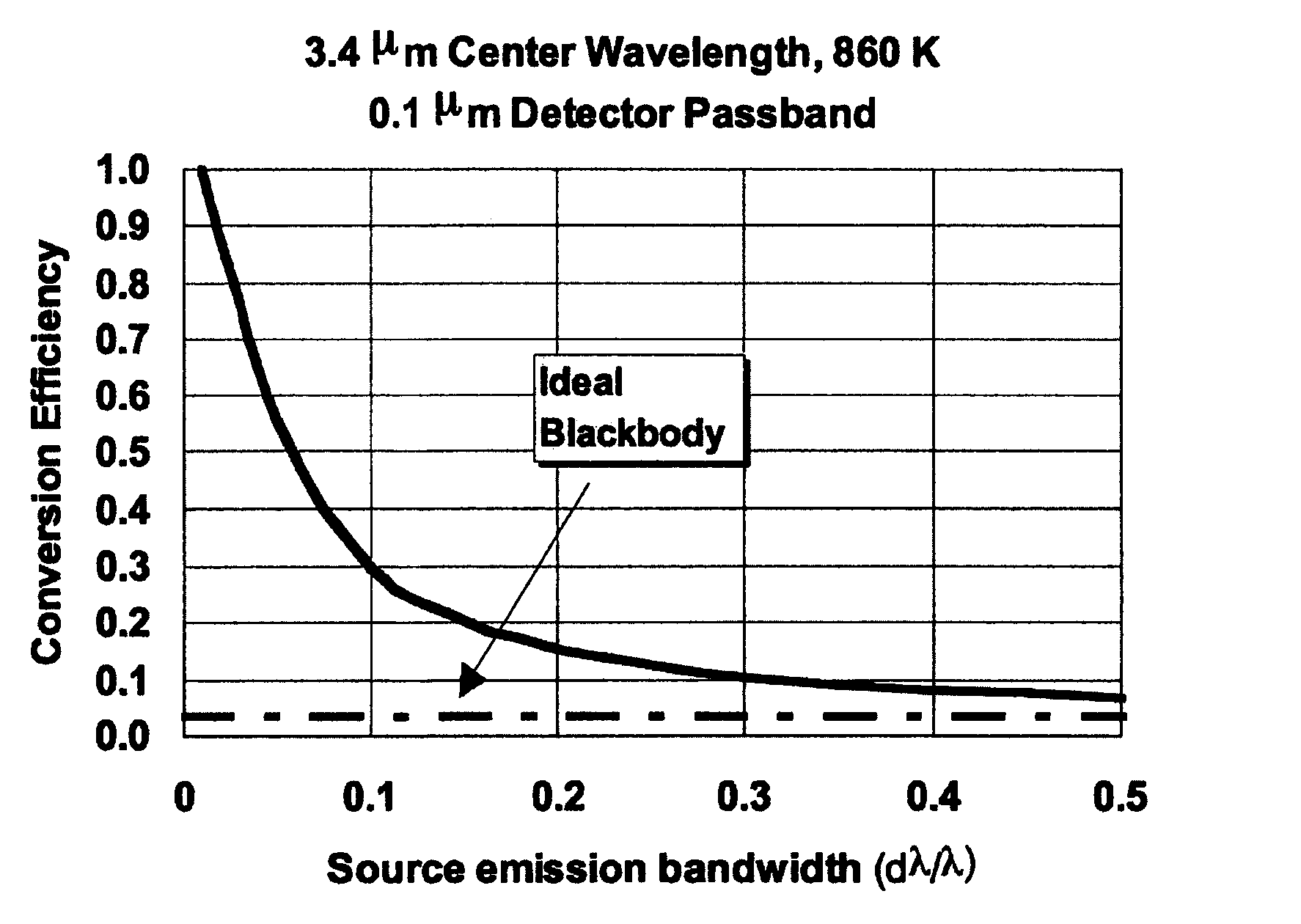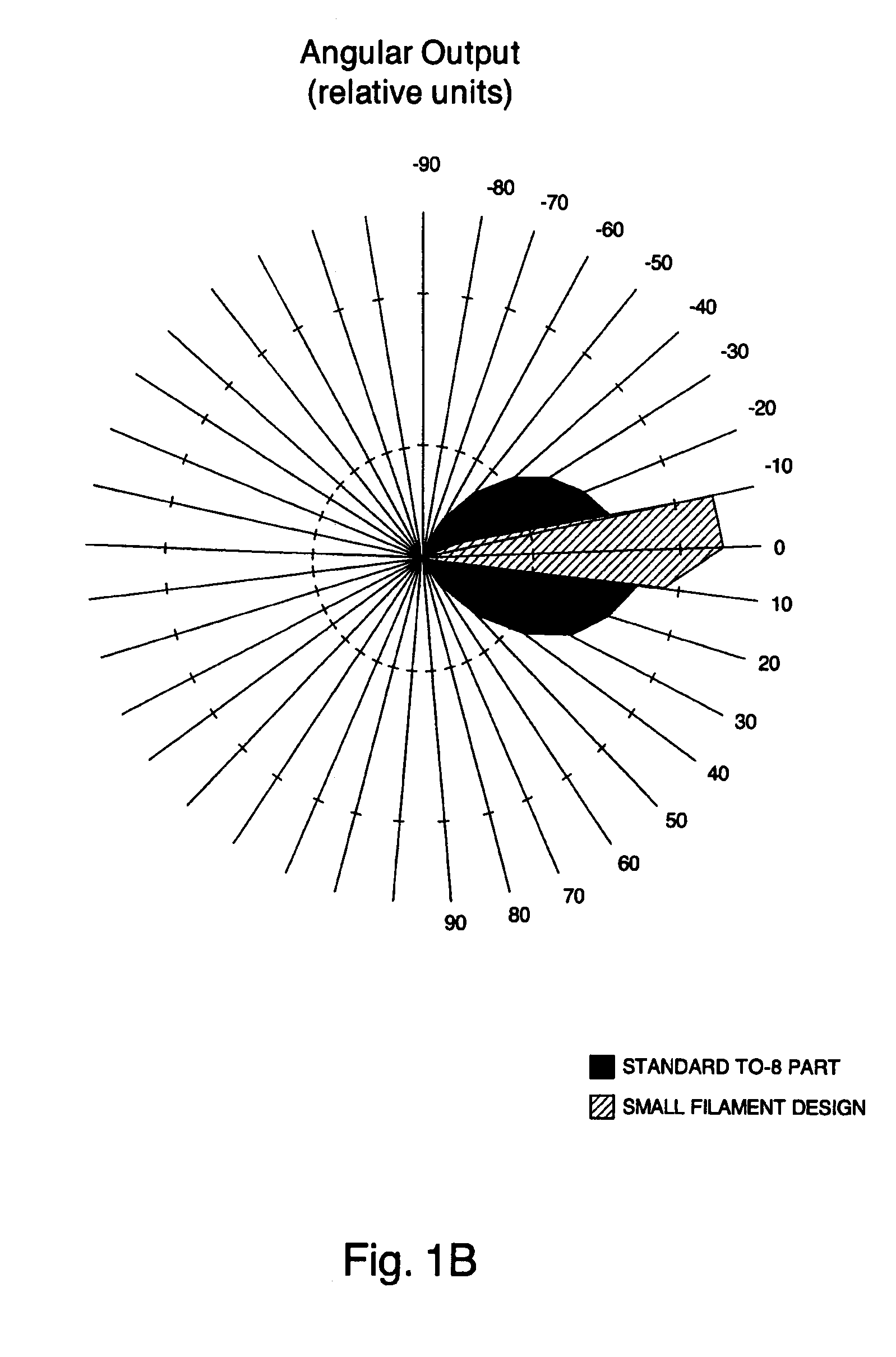Infrared radiation sources, sensors and source combinations, and methods of manufacture
a technology of infrared radiation source and source combination, applied in the field of optical radiation source, can solve the problems of low power efficiency, low efficiency of electrical to useable optical energy, and inability to enjoy wide application, so as to optimize the emitting area and emissivity of the source, improve the effect of waveband emission and maximize power outpu
- Summary
- Abstract
- Description
- Claims
- Application Information
AI Technical Summary
Benefits of technology
Problems solved by technology
Method used
Image
Examples
Embodiment Construction
I. Reflector Source with Reflector Housing in Front of Planar Emitter which is Normal to the Emission Axis, in Conjunction with Textured Source
[0057]One form of the invention is a relatively low power reflector infrared (IR) source with an improved texture, smaller (compared to the prior art) filament, and with an integral reflector.
[0058]A common design issue for IR sources is the requirement for significantly more useful signal, particularly in the LWIR, with significantly less required drive power. The present invention effects such changes by including reduced filament size, improved filament texture, and by incorporating a reflector into the source package. This allows, for example, for medical instruments (including anesthesia monitors or critical care systems), industrial safety instruments, and automotive emission monitoring.
[0059]FIG. 1A shows an IR source 10 of the invention having relatively high usable signal with relatively low drive power. A relatively small filament 1...
PUM
 Login to View More
Login to View More Abstract
Description
Claims
Application Information
 Login to View More
Login to View More - R&D
- Intellectual Property
- Life Sciences
- Materials
- Tech Scout
- Unparalleled Data Quality
- Higher Quality Content
- 60% Fewer Hallucinations
Browse by: Latest US Patents, China's latest patents, Technical Efficacy Thesaurus, Application Domain, Technology Topic, Popular Technical Reports.
© 2025 PatSnap. All rights reserved.Legal|Privacy policy|Modern Slavery Act Transparency Statement|Sitemap|About US| Contact US: help@patsnap.com



